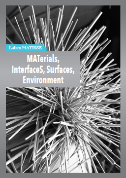Aller au contenu Aller au menu Aller à la recherche
 Navigation de la rubrique abonnements, dernières nouvellesPartenaires
Navigation de la rubrique abonnements, dernières nouvellesPartenaires
 accès rapides, services personnalisésTraductions :Labex MATISSE
accès rapides, services personnalisésTraductions :Labex MATISSE
Axe 1 - Biominéralisation
Appel à projet 2016.
Soutenance de thèse le 27 septembre 2019 à 9h30 - Salle 2 du Collège de France
calcium oxalate - hydroxyapatite - microfluidics - in situ characterization - growth kinetics
Over the past decades, the increase in kidney stone formers has raised the importance to understand the biomineralization process responsible for urolithiasis. Calcium oxalate (CaOx) crystallization – kidney stone main inorganic compound – has largely been characterized under batch synthesis conditions that cannot be regarded as biomimetic with respect to the microscale environment in the kidney and to the urinary flow.
In this work, we used a reversible microchannel to mimic the collecting duct in the nephron where CaOx stones can form due to supersaturated levels in calcium and oxalate ions. Within the channel, CaOx crystallization was induced under co-laminar mixing of Ca2(aq) and Ox2-(aq) ions matching pathological concentrations – i.e. hypercalciuria and moderate hyperoxaluria. Scanning electron microscopy and Raman spectroscopy were used to support our investigations. They showed that CaOx crystals precipitate in a mixture of monohydrated whewellite (CaC2O4.2H2O, COM) and dihydrated weddellite (CaC2O4.2H2O, COD) in the microchannel, similar to what is observed by the physicians. In situ information on the kinetics of CaOx crystal growth could be acquired in our microfluidic system. They confirmed the effect of the hydrodynamic and chemical conditions on the growth kinetics and the final chemistry (phase, shape) of the formed CaOx crystals. In a trial to achieve a more complex biomimetic model (formation of kidney stones on a Randall’s plaque), hydroxyapatite was grown also in the microchannel and the CaOx crystal formation was investigated.
25/09/19
Traductions :
» En savoir plus sur «la plaquette de présentation du LabEx MATISSE (version anglaise)»
Direction
Florence Babonneau
Administration
matisse @ upmc.fr (matisse @ upmc.fr)
Communication
Emmanuel Sautjeau
emmanuel.sautjeau @ sorbonne-universite.fr (emmanuel.sautjeau @ sorbonne-universite.fr)
UPMC